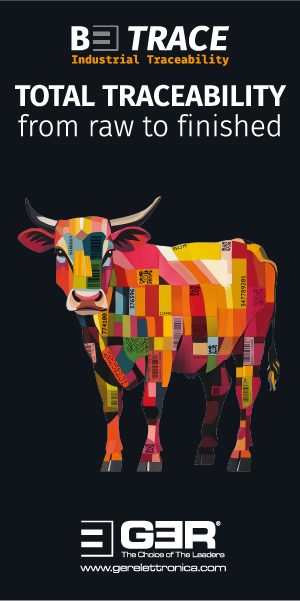Market Intelligence - 16.02.21
Macroeconomics
The pandemic still holds a tight grip on everything, but politics and the financial markets are beginning slowly to shift the focus onto other equally important subjects. The financial markets for example remain optimistic about the future. Stock market indices have lost a little bit of steam, but remain in most cases pretty much around record levels. The new US administration and its foreign policy is beginning to take shape. Its position on trade with China will remain tight, strict, but more pragmatic. Communications and relations seem to be improving already.
In Europe, the vaccination strategy and the bureaucracy around it look like a big failure. The EU Commission has given a weak impression.
The EU economy shrank by about 7% in 2020 while the US economy shrank by 3.5%. The financial markets have begun to discuss concerns about the return of inflation. The rise of commodity prices, energy and transportation charges should be a warning sign to the many pundits who predict low interest rates will remain for a while yet.
Covid-19 is not just depressing consumption it is also negatively impacting production, production costs and global transport. In combination with all the stimulus packages and garnished with rising national budget deficits this could become a very toxic cocktail. Governments will need low interest rates to finance the cost of the pandemic and at the same time consumer prices could soar as a result of the above-mentioned cost drivers and trigger the need to raise interest rates eventually. It is pretty obvious that rising interest rates could be lethal to a recovering economy as any substantial rise in inflation rates would be. For investors and corporations, as well as for consumers, this is definitely something to monitor carefully.
The rise of crypto-currencies, which has been fuelled by the acquisition of 1.5 billion units by Elon Musk and the acceptance that Tesla will take Bitcoins as payment is something else that has to be observed. For many people, crypto-currencies are still something like virtual reality, but the more they are accepted the more they will have influence on the traditional financial markets and money policies.
The price of a barrel of crude oil now trades constantly about the $60 level, which is considered the bottom line for many producing countries to balance their national budgets and to entertain their economies. For the global economy, rising energy and oil prices are depressing disposable income and - even when it’s not measured in the inflation rates – is one of the main cost drivers of products and services.
The US dollar continued to trade within the very narrow band around the $1.21 against the euro.
Leather Pipeline
The fundamental trends in the raw materials market remain intact. The main centre of production that the global industry now has, and the main driver of its recovery, is China and everyone there has been on holiday. We wish readers in that part of the world very happy New Year and a prosperous Year of the Ox.
With small clusters of new covid-19 cases in China, the government and the authorities have been once again on high alert. In particular, travel around the time of the Chinese New Year holiday (around February 12) was and a major concern. Consequently, the authorities have tried to reduce travel by as much as possible without imposing official restrictions.
Many other tools were used, including rewards and the traditional official ‘advice’, which most people know they had better follow. Travel is down, but many people have been on the move and many families have gathered. It’s going to be a stress-test for the pandemic situation in China. Most likely, around two weeks from now, we will know what the effects will be and if the authorities have been successful in their control, test and quarantine policy.
For the leather pipeline the holidays have had less influence than one might have had expected. The effects of the pandemic and the situation outside China have made many people believe that productions would shut early and possibly remain closed for a longer period than normal. From all the reports we have received from sources in China, we cannot confirm this. We would go as far as to say that offices and, in most cases, also production units were working until the very last moment and will reopen sooner than one would expect with the global situation. There may be two main reasons for this. There has been less travel and fewer workers return to their home towns and villages this year. Many people have received rewards for staying and continuing to work. However, this requires also a healthy order-book at the factories.
There are many discussions about business and the situation in the leather pipeline, but order-books for upholstery and automotive tanners continue to be well filled and this has also been reflected in the raw materials market since last summer. The situation in the side leather business is possibly not as good, but this seems not to be playing such an important role. The Chinese industry seems to have left for the holidays in good health.
A quick review of the European tanning industry delivers less uniform feedback. Upholstery and automotive tanners here are also operating at more or less standard levels. However, the pandemic is leaving some concerns. Companies cannot trust the situation and the threat of interruption caused by covid-19 cases among the workforce, or problems in the supply chain are real. Temporary shutdowns at contract tanners in Germany or problems owing to absenteeism are being reported. The European industry may have returned later to regular production than China, but on average the upholstery and automotive tanning clusters there are reporting almost normal levels of production now.
The situation with side leather tanners is a bit more difficult. Dress shoes and leathergoods are not operating at the same level as upholstery and automotive.
Businesses all around the globe, and this includes Europe, have had to review their supply chains. If there’s one thing we have learned it is that extra-long supply chains and global networks can quickly become a problem. The network of supply chains has become so tight and so efficient that any kind of interruption or delay can cause a lot of problems.
Almost every day we hear about shipping delays and the rise of transportation costs. Congestions is still weighing on shipments from the US to Asia, but also the other way round. We understand from a number of importers that shipping costs for short-term bookings have gone up four- or five-fold since last October. Containers from China to Europe used to cost in the range of $2,000 per unit; today it is not uncommon for shipping lines to ask for more than $10,000. For several importers it has become a question of whether it might be more reasonable to walk away from the business rather than bear the losses. This applies in particular to products that are not desperately needed.
Retailers in Europe are still sitting on large stocks. Most shops are still closed and companies hacve had little chance to get rid of stocks from previous seasons. Several commentators are expecting discounts of 70% and more when stores finally reopen from March onwards. This has an effect on profitability and of financial situation of many retail chains; it also has an effect on the buying strategy of the consumer.
The consumer is going to be flooded this spring by all kinds of super-sales and the present congestion of material could quickly shift from shops to private consumers. As nice as it might be in the first instance when all people return in sizable numbers to the shops to take full advantage of the discounts, it would then most likely have a negative effect on the seasons to come. We can read almost every day about what the world of consumption is going to look like after regular retail is permitted again; the theory remains a theory until it’s turned into reality. The pandemic has affected private consumption outside China to a far bigger extent than anything before it. It’s far from clear if consumers will just fall back into the same routines we saw until the beginning of 2020. It seems unlikely. Even if consumers wanted this, it would be difficult for brands and retailers to be ready for it at the snap of customers’ fingers. Production and supply chains for many products are simply too long and too slow to react immediately to changes.
The global pipeline has been paralysed for too long for ordinary business to be restored within weeks after shops are allowed to open again. The big online platforms took full advantage and have everything in place to continue. Nobody can blame them. When we think about the leather pipeline, in particular for shoes and for fashion articles such as bags or other leathergoods, it is obvious that, even when the immediate effects of the pandemic begin to fade, it will still be quite a bit of time before the situation becomes clear.
In a general poll, more than 50% of European manufacturers have declared that they are going to look for a sharp increase in local or regional suppliers. This is at good news for the European tanning industry; it will strengthen their position and that of their manufacturing clients.
In the past two weeks, one subject that has been intensively discussed within the industry is Mini. This brand, part of the BMW group, has announced that it will end its use of leather in its car interiors. This news is not really of great importance in terms of leather demand. Minis are not made in big numbers and each car consumes only a small volume of leather. However, it is one more blow and the continuation of what we have been seeing in the automotive industry for some time. After Tesla, Renault, Seat and Polestar, Mini is just one more.
Leather will continue to be an exclusive interior material in the luxury market. In the volume market, brands will move away from leather consumption. It is a trend set for the coming years. As long as the consumer is willing to accept plastic on the seats and believes and follows the marketing speech that ‘vegan plastic’ is better than leather, the volume of consumption of leather in vehicles will decline in this decade, and in an accelerating manner. The industry can only hope that the rise in total units produced and sold in the Pacific region and the US will compensate for these losses.
We are not in possession of anything new and interesting from the split market; business there has followed the same routine as before. Splits will benefit from grain leather becoming more expensive after the sharp gains of raw material prices.
The skins market continues to suffer agonies. Niches perform well, while the standard material struggles. Skin prices are still for the majority of origins and types below a viable level. However, considering the time patterns we have no other option than to predict a recovery for sheepskins. If leather demand does not collapse again owing to some unknown incident in the future, the spread between cattle hides and sheepskins is far too high. Sooner or later the attractive price levels of sheep, lamb and goat skins will catch the attention of manufacturers. There are still plenty of options that can be used and we remain convinced that in the end market logic will apply.
The coming two weeks will be determined by the holiday in Asia. In Europe the industry is presently dealing with supply problems and the just-in-time delivery of raw material. The kill is not sufficient at the moment to satisfy demands for fresh, chilled hides. The beef industry has taken full notice and is now trying to take as much from the situation as possible. Prices are rising by too much and too quickly. The pendulum had swung too far one way and is now swinging back too far the other way. This is neither unusual nor is it a real indicator of the status of the leather pipeline at the moment. It is just painful for those who have to pay their bills.
It is certainly important to watch the transportation sector. There is a lot of congestion at the moment from raw to finished product and the disturbances are creating plenty of traps for the road ahead. We have the feeling that this might influence the situation for several more months if not for the entire year.
We should expect much of the same until the end of March or the beginning of the second quarter. After that, seasonal effects will fade and the realities of the supply chain and the situation of the economy will take on greater importance.












